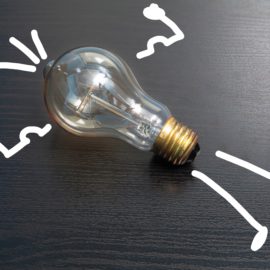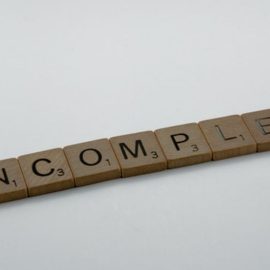

This article is an excerpt from the Shortform book guide to "The Alter Ego Effect" by Todd Herman. Shortform has the world's best summaries and analyses of books you should be reading.
Like this article? Sign up for a free trial here .
What is The Alter Ego Effect about? Why is Todd Herman’s vision of an alter ego?
In The Alter Ego Effect, Herman presents a systematic approach to performing at your best. By creating, shaping, and implementing an alter ego, you’ll have all the strengths and abilities you need when the heat is on.
Read below for a brief overview of The Alter Ego Effect.
The Alter Ego Effect by Todd Herman
In The Alter Ego Effect, athletic performance coach and leadership advisor Todd Herman reveals the trick that many professional athletes use to bring their A-game when it matters: adopting an alter ego. By doing this, you consciously decide which of your existing talents and skills to bring to the fore and use these to excel in defining moments of your life and career. As a result of years of coaching athletes and other high-performers in implementing alter egos, Herman’s created a multi-step system for creating and using your alter ego for maximum impact and success.
What Is an Alter Ego?
According to Herman, an alter ego is a science-backed tool that lets you adopt the traits, behaviors, and demeanor of a person who excels in a particular realm of your life (like your career or your social life). In practice, when using an alter ego, you set aside your usual mindset and behaviors and instead take on the mindset and behaviors of your alter ego—though you still filter these through your personality, so you avoid “playacting” as your alter ego. For instance, to excel as a businessperson, you might adopt the alter ego of Martha Stewart and negotiate shrewdly and confidently. If you’re a professional rower, your alter ego might be a graceful heron, and you might take on the heron’s single-minded focus and gracefulness to succeed.
When you use an alter ego, you intentionally choose which of your existing traits you’ll draw on to succeed in a given situation, continues Herman. Normally, people don’t consciously choose what strengths they bring to bear in each situation they enter, which prevents them from doing their best.
Many high performers make a habit of using alter egos to consistently give peak performances, writes Herman. For instance, a world-class piano player might always adopt the alter ego of Wolfgang Amadeus Mozart when performing to ensure they can always play at their best.
Why Use an Alter Ego?
Now that you know what an alter ego is, Herman discusses the five advantages of creating one in The Alter Ego Effect. These advantages are:
- An alter ego lets you perform at your peak when it counts
- An alter ego lets you set aside your weaknesses
- Criticism falls on your alter ego, not on you
- You become absorbed in your task
- You self-actualize
The Steps to Bring Out Your Alter Ego
We’ve just explained the advantages of using an alter ego. Now, let’s discuss how to bring it out. There are six steps to this process, as described in The Alter Ego Effect:
Step 1: Decide How You Want to Change
The first step of creating your alter ego is to determine what behavioral and mental changes you want to make in a particular realm of your life. We’ll break this larger step into three sub-steps:
- Choose a realm of your life to focus on
- Set three types of goals
- Determine your motivating purpose
Step 2: Identify Your Inner Nemesis and Its Forms
Now that you’ve set your purpose-driven goals, your next step is to identify the inner nemesis preventing you from achieving them, writes Herman. Your inner nemesis is a cluster of negative thoughts and beliefs that keep you from rising to the challenge in high-stakes moments.
Your inner nemesis can appear in a single form or in a combination of forms to prevent you from doing your best: imposter syndrome, inner wounds, and self-created stories.
Step 3: Build Your Alter Ego
Now you’ve identified the inner nemesis that currently prevents you from rising to the challenge in high-stakes moments. Let’s move on to constructing the alter ego that will rise to the challenge in high-stakes moments. There are four sub-steps to doing this:
- Decide on an alter ego
- Name your alter ego
- Give your alter ego an origin story
- Attach an object to trigger your alter ego
Step 4: Turn on Your Alter Ego
Now that you’ve created your alter ego and attached a trigger object to it, you can use the alter ego, asserts Herman. Do this by determining how specifically you’ll wield your object to turn on your alter ego. You must have a simple, repeatable action that officially signals the assumption of your alternate identity.
You’re best served by finding an action that, for you, “releases” your alter ego, proposes Herman. This might be donning the object if it’s wearable, touching or opening the object, or a more elaborate action.
Step 5: Give Your Alter Ego a Hidden Weapon
Let’s discuss what to do when even your alter ego faces unforeseen challenges: Give your alter ego a hidden weapon. Your inner nemesis may even attack your alter ego, leading to doubt and the resurfacing of negative self-created stories. For example, you’re giving a speech and your audience starts to protest what you’re saying. Even your alter ego Michelle Obama might allow the inner nemesis to sow seeds of doubt in her abilities.
When this happens, use your hidden weapon: Reaffirm your alter ego’s strengths, values, and abilities, insists Herman. Do this as yourself or as your alter ego, either by:
- Talking back to your inner nemesis, which allows you to dismiss the critical self-talk and return to the activity.
- By saying a self-affirming phrase that reinforces that you deserve to be doing what you’re doing.
In the case of your speech, you might tell your inner nemesis: “You don’t get to tell me I’m not good at this. Go bother someone else (talking back). I’m a competent orator, and I can hold an audience’s attention (self-affirming phrase).”
Step 6: Practice Using Your Alter Ego
Lastly, The Alter Ego Effect says to put all the pieces of alter-ego creation together and practice using your alter ego in low-stakes situations, recommends Herman. Do this in familiar public settings (a restaurant, the grocery store, or the library, for example), when meditating, or when playing a game.

———End of Preview———
Like what you just read? Read the rest of the world's best book summary and analysis of Todd Herman's "The Alter Ego Effect" at Shortform .
Here's what you'll find in our full The Alter Ego Effect summary :
- What an alter ego is and why you should use one
- The steps of building, shaping, and unleashing your alter ego
- Why your alter ego is still authentically you






